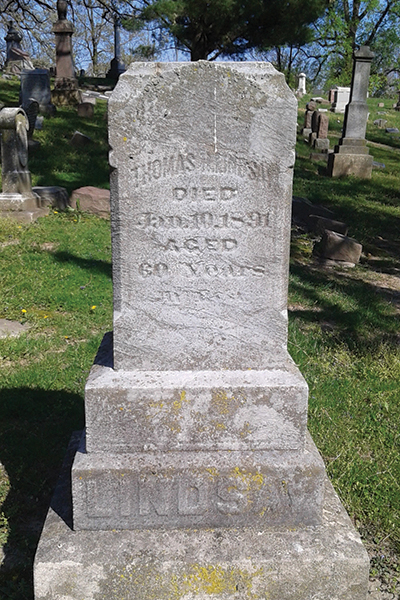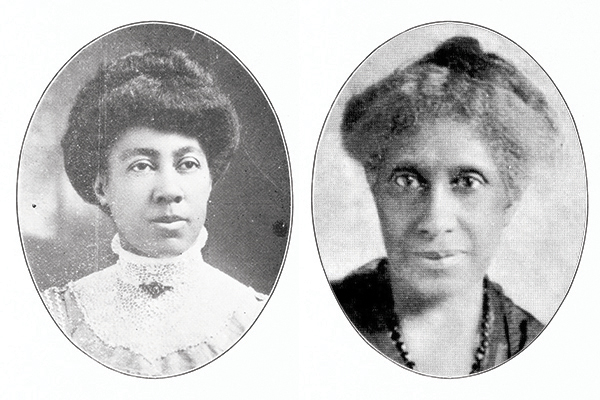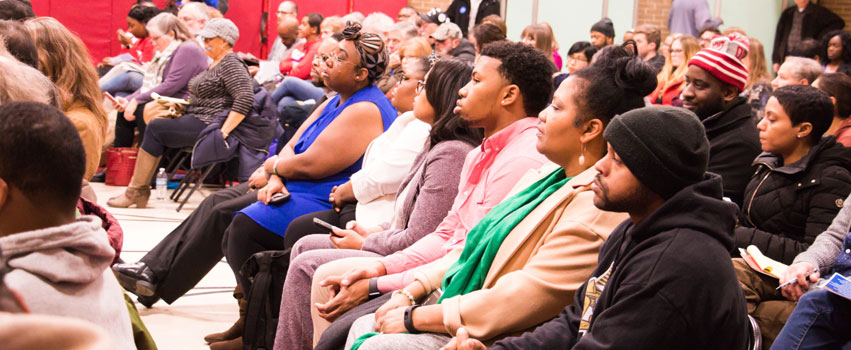The Lindsay Family Legacy

In 1793 Congress passed the first Fugitive Slave Act, signed into law by President George Washington. It guaranteed the rights of Southern slaveholders to search for escaped slaves across all state borders—including the so-called “free” states. Many Northerners sympathized with the Southern cause, passing local and state laws that benefited the slave-holding states and made life even more dangerous for African Americans, as well as any person who helped them attain freedom.
Though located in the North, Peoria was split on the issue of slavery. It was, however, home to several notable abolitionists, including conductors on the Underground Railroad and groups like the Anti-Slavery Society. They would hide, feed and protect runaway slaves, working with allies to secretly transport them out of the Peoria area, up to Princeton and Dixon, Illinois, and further north toward Canada.
Peoria has a wonderfully rich past, but often our more painful history is overlooked. The Peoria Tribe of Indians, who originally settled this land, was relocated—first to present-day Missouri, then to Kansas and finally to Oklahoma, where their tribal headquarters remains today. That most African Americans were originally brought to this country through the evils of slavery is no secret, yet their personal stories are often missing from the history books. It is long past time to bring these heroes and heroines, triumphs and tragedies to wider attention.
Pioneer of Peoria
When Illinois received its statehood in 1818, no delegates from Peoria took part in the Constitutional Convention. There were no Americans living in what is now Peoria, as the original French settlers were driven from the land during the War of 1812 and Fort Clark, constructed by American military forces in 1813, was quickly abandoned and burned to the ground. It was not until the following spring that the first group of permanent settlers arrived. Peoria became a township in 1835, and five years later its population numbered less than 1,500—including just seven or eight African Americans. One of them was a young child named Thomas Harris Lindsay.
Thomas Lindsay was among Peoria’s earliest settlers and one of its most prominent and influential Black citizens. He was born in Pennsylvania on August 15, 1830, although the details of his early years remain unknown, and married Sophia Jane Lindsay, who was born a slave in Kentucky in 1838. It is believed that Thomas earned the money to purchase her freedom, along with that of many other family members and friends. As one of Peoria’s first “market masters,” a prestigious position which placed him in charge of the goods sold at a downtown Peoria market, Thomas accumulated a considerable amount of property. He was also known for predicting the weather, and was fondly referred to as the “Weather Prophet.”
Dr. Romeo B. Garrett, the first Black professor at Bradley University, mentions Thomas Lindsay at length in The Negro in Peoria, his 1973 book chronicling the city’s early African American history. According to Dr. Garrett, he was the best known Black man in Peoria and “fought militantly for the freedom and rights of African Americans.” Both Thomas and Sophia were active in their church and community, and the entire Lindsay family contributed to progress in the city of Peoria.
A Lineage of Civic Leadership
Thomas and Sophia Lindsay had six children—Elizabeth, Julia, John, Cynthia, Susan and William—and all of them were educated and accomplished. Their education began at a time when Peoria’s schools were segregated, with Thomas helping to lead the successful charge for integration in 1872. The Lindsays were instrumental in many of the civic clubs and organizations that sought to improve living conditions for Peoria’s African American community. They assisted with food, clothing, education, housing and other social services, and tried to make sure they received fair and proper treatment from the police.
One of their daughters, Julia Lindsay Gibson, was an activist and community leader in Peoria her entire life. A charter member of the Peoria Negro Women’s Mutual Aid Club, she married Henry C. Gibson, the first African American elected to public office as a constable for the City of Peoria. Julia was considered the first chiropodist (an early term for podiatrist) in Peoria. She was also co-owner of a downtown business listed in the Peoria City Directory in 1890 as the firm of Gibson & South.

The Lindsays’ eldest daughter, Elizabeth, would go on to make an impact on the entire nation. She was born in Peoria in 1855 and attended school in Peoria in her younger years. When Thomas and Sophia found integrated secondary schooling in Princeton, Illinois, they sent her some 55 miles north, and Elizabeth graduated with high honors from Princeton Township High School in 1873. One of the school’s first Black graduates, her inspirational commencement address was reprinted in newspapers across Illinois:
“Give the African race 200 years of freedom, respect and education instead of 200 years of slavery, prejudice and ignorance, and they will attain to an equal point of civilization and intelligence with that of any other people. During the rebellion, the slaves were willing to fight and die if need be for an imperfect freedom; yet it was very hard to persuade the North to give them a fair chance for even that. Give us everywhere the same privileges that we enjoy in this community… then after 200 years of such privileges, judge us.”
She went on to become a schoolteacher and held teaching positions in Illinois, Iowa, Kentucky and Indiana. She married Dr. William H. Davis in Peoria in 1885 and the couple moved to Chicago in 1893, where she was active in the Black women’s club movement spearheaded by the National Association of Colored Women. An original member of the NACW, Elizabeth Lindsay Davis served as a national organizer for nearly a decade. She was also a noted historian who chronicled African American history and authored many books, speeches and magazine articles. Her most famous work is entitled Lifting as They Climb, which documents the history of the Black women’s club movement, from the national conference in 1895 that led to the NACW’s formation to the book’s publication in 1933. She also wrote The Story of the Illinois Federation of Colored Women’s Clubs, 1900-1922.
Elizabeth helped form dozens of women’s and children’s aid clubs throughout her life, including the Chicago chapter of the Phyllis Wheatley Women’s Club (named for the great African American poet), which she served as president for nearly three decades. She also founded the Phyllis Wheatley Home for Girls in Chicago in 1908 and served as its first president. She travelled extensively, educating others about history, civics and politics; collaborated with contemporaries like Ida B. Wells and W.E.B. Du Bois; and joined the cause for women’s suffrage as well. She died in Chicago in 1944.
Worthy of Statues
Both Thomas Harris Lindsay, who passed away in 1891, and Sophia, who passed in 1910, are buried in Peoria’s historic Springdale Cemetery, along with their daughter Julia; her husband, Henry Gibson; and several of their other children. Having begun his journey as an Illinois pioneer at the age of seven, Thomas accomplished so much, in spite of the odds against him. He and Sophia and their six children built an impressive legacy of accomplishment—they were truly a family for the history books. The Lindsays’ impact on Peoria is worthy of statues, scholarships, and streets named after them. PM
